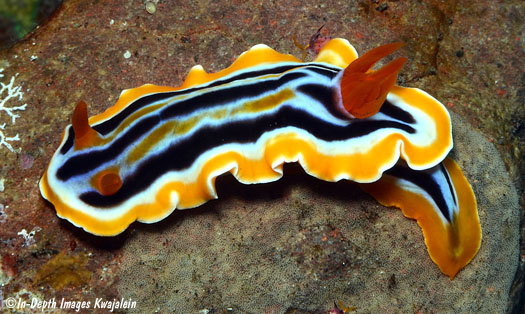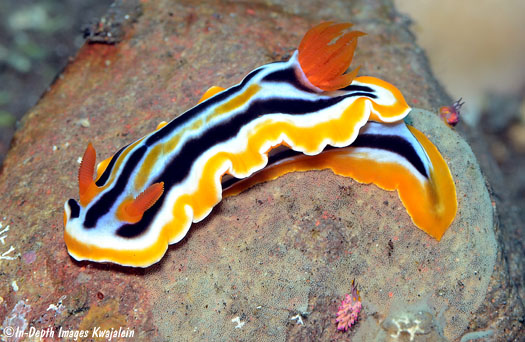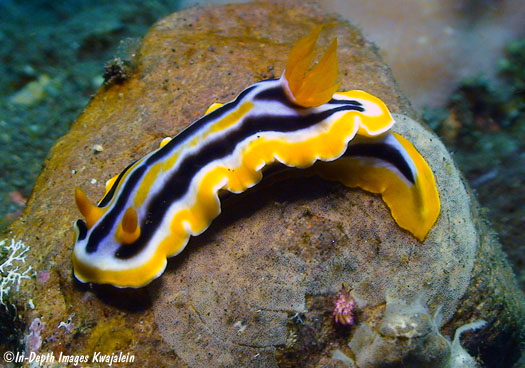
One specimen was seen under a rock in shallow water at Tulamben. It was on an egg mass, deposited in the typical manner for this genus, as a spiral with the flat edge attached to the substrate. Recent DNA analysis by Layton et al (2018) showed that C. colemani varies in color, in some areas matching similar species as a probable kind of mimicry. They figure genetically identified C. colemani forms that look very much like C. annae, C. burni and C. westraliensis that all look very different from the original, indicating that color pattern is not always a reliable means of distinguishing species, at least within this genus. With such differences in color forms, it certainly seems likely that other variations will be found, but at this point I am unsure if the DNA from specimens of the originally described color form from Queensland has been checked. The specimens originally described by Rudman, 1982 had a number of narrow, alternating black and orange longitudinal streaks that seem to me quite different from all of the specimens figured on this page.

I was so focused on the large chromodorid that I did not notice the small specimens of the egg-eating nudibranch Favorinus sp. b133 grazing away at the egg mass in the lower part of the photo and crawling away at left, just above the midline.

There is an even smaller eolid just to the left of the lower pinkish Favorinus, which is probably a younger and smaller egg eater.

Created 14 July 2013
Updated 25 January 2020